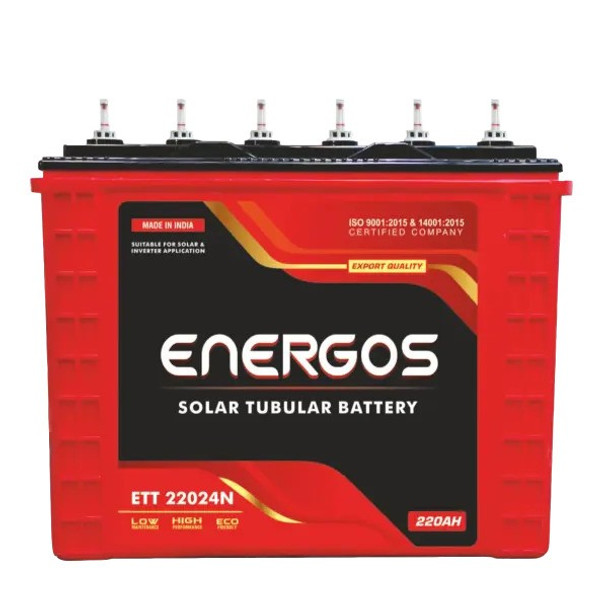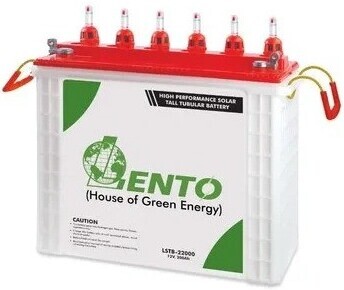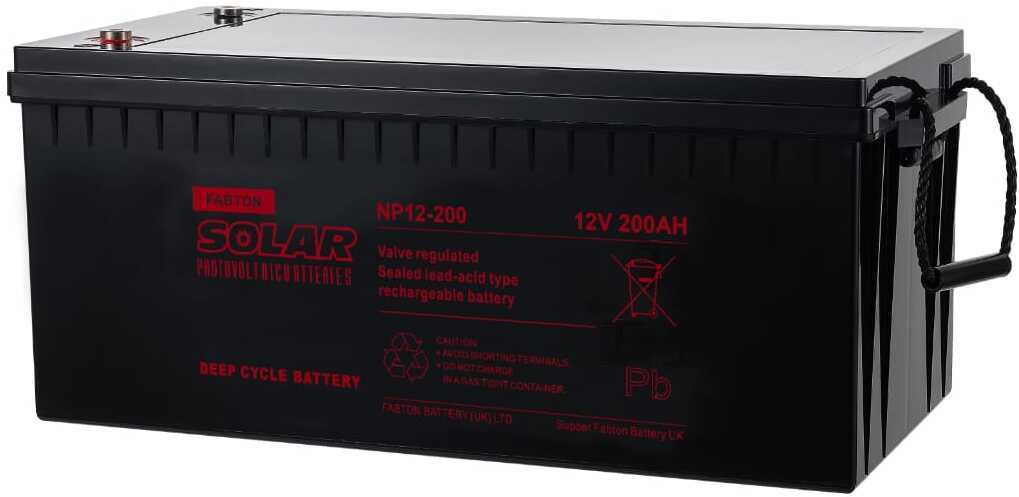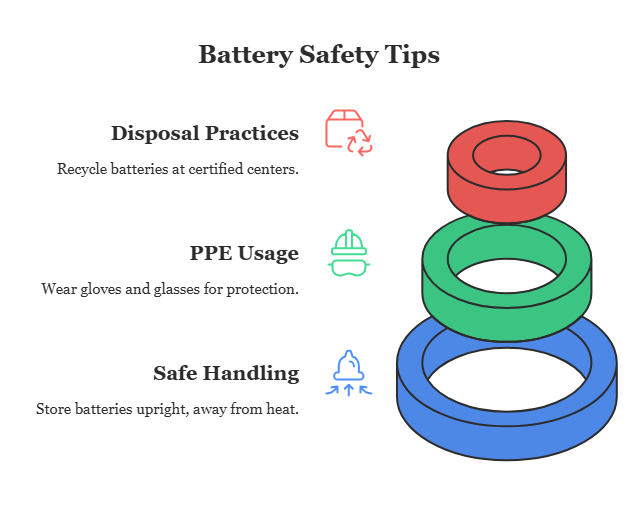Battery Safety Tips for Welding Professionals: Avoiding Overheating and Power Loss
Introduction
Battery-powered welding equipment plays a crucial role in industrial operations, providing the necessary energy for seamless and efficient welding. However, improper handling of batteries can lead to overheating, power loss, and even dangerous accidents, such as battery explosions or electrical fires.
For welding professionals, understanding battery safety best practices is essential to:
-
Prolong battery lifespan
-
Ensure consistent power supply
-
Prevent workplace hazards
This guide will explore the causes of battery overheating and power loss, as well as practical safety tips to keep your welding operations running smoothly.
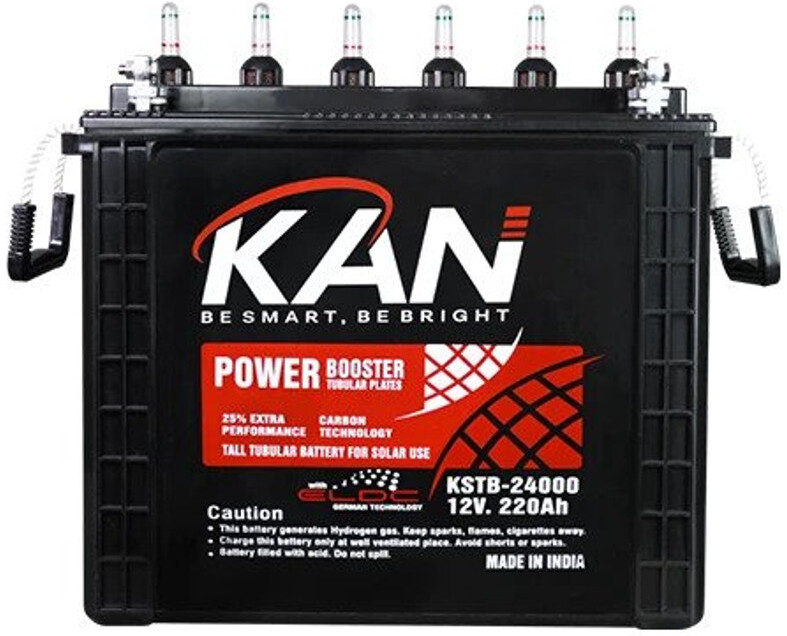
Kan 12v. 220AH Solar Tubular Battery
Key Takeaway
-
Proper ventilation is crucial – Ensure welding vehicle batteries have adequate airflow to prevent overheating and maintain efficiency.
-
Regular maintenance extends battery life – Cleaning terminals, checking voltage levels, and securing connections help prevent power loss and improve performance.
-
Overcharging damages batteries – Use a smart charger to regulate charging cycles and avoid excessive heat buildup that can shorten battery lifespan.
-
Invest in high-quality batteries – Deep-cycle AGM and lithium-ion batteries are more reliable for welding applications, offering longer runtimes and better heat resistance.
Understanding Battery Overheating in Welding Operations
Battery overheating is one of the most common issues faced by welding professionals. Excessive heat can damage battery cells, reduce performance, and increase the risk of fire or explosion.
Causes of Battery Overheating
Excessive Power Draw from Welding Equipment
-
Welding machines require a high amount of energy, which can overload the battery if it is not designed for continuous high-power usage.
-
Using an incompatible or low-capacity battery can cause it to overheat due to excessive demand.
Poor Ventilation and Heat Buildup
-
Batteries generate heat during operation, and if they are installed in an enclosed space without proper airflow, heat can build up and accelerate wear.
-
Lack of cooling systems or exposure to hot environments can worsen overheating.
Overcharging or Faulty Charging Systems
-
Overcharging a battery can cause thermal runaway, where excessive energy input raises the temperature uncontrollably.
-
Using damaged or low-quality chargers can also result in inconsistent voltage levels, leading to overheating.
Using the Wrong Battery Type
-
Lead-acid batteries may struggle with high-power welding applications and heat up quickly if overworked.
-
Deep-cycle AGM or lithium-ion batteries are better suited for welding, as they handle power surges and discharge cycles efficiently.
Effects of Overheating on Battery Performance
-
Reduced battery lifespan – Continuous overheating degrades battery cells faster, leading to premature failure.
-
Loss of efficiency – Overheated batteries struggle to hold a charge, causing frequent power interruptions.
-
Risk of fire or explosion – Extreme overheating can cause battery casing to swell or rupture, leading to dangerous accidents.
Signs of an Overheating Battery
-
The battery feels hot to the touch even when not in use.
-
You notice bulging, swelling, or leakage from the battery case.
-
Frequent voltage drops and poor power retention.
-
Unusual burning smells or smoke coming from the battery area.
If you notice any of these warning signs, immediate action is needed to prevent damage or a potential hazard.
Energos 12V-220AH Tubular Battery
How to Prevent Battery Overheating
Proper battery management and preventive measures can help welding professionals avoid overheating issues and improve battery efficiency.
Read more...Troubleshooting Common Automotive Battery Problems in Welding Vehicles
Choose the Right Battery Type
For welding applications, AGM deep-cycle or lithium-ion batteries are recommended because they:
-
Can handle high power loads without excessive heat generation
-
Provide faster recharge times
-
Have better thermal management than standard lead-acid batteries
Ensure Proper Ventilation and Cooling
-
Always install batteries in a well-ventilated area to allow proper heat dissipation.
-
Consider using battery cooling systems or fans in high-temperature environments.
Avoid Overloading the Battery
-
Check the welding machine’s power requirements and use a battery that meets or exceeds the demand.
-
If needed, use an auxiliary power source or a dual-battery system to distribute power efficiently.
Use Smart Charging Systems
-
Invest in a high-quality, automatic battery charger that prevents overcharging and maintains optimal voltage.
-
Avoid cheap or unreliable chargers that can cause voltage fluctuations and overheating.
Inspect Battery Terminals and Connections Regularly
-
Loose or corroded battery terminals can cause resistance buildup, leading to heat generation.
-
Clean battery terminals and ensure all connections are tight and secure to prevent electrical inefficiencies.
Read more...How to Select the Best Automotive Battery for Welding Trucks in Nigeria
Lento Tubular Battery 220AH/12V
Preventing Power Loss and Battery Failure
Power loss is another critical issue that welding professionals face when using battery-powered equipment. A sudden drop in battery power can interrupt work, cause downtime, and affect productivity. Understanding the causes of power loss and implementing preventive measures can help ensure a steady power supply during welding operations.
Common Causes of Power Loss in Welding Batteries
Poor Battery Maintenance
-
Corrosion on battery terminals can increase resistance and reduce power transfer.
-
Loose connections can lead to intermittent power loss during welding.
Insufficient Charging Cycles
-
Not fully charging a battery before use can cause a shorter run time and frequent interruptions.
-
Using a faulty or incompatible charger can result in incomplete charging.
Aging or Low-Quality Batteries
-
Batteries lose their ability to hold a charge over time, leading to reduced performance.
-
Cheap or low-grade batteries tend to degrade faster under high power loads.
Best Practices to Maintain a Steady Power Supply
Regular Battery Inspections and Maintenance
-
Check battery terminals for corrosion and clean them using a baking soda solution.
-
Inspect battery cables and ensure all connections are secure.
Invest in High-Capacity and Durable Batteries
-
Use deep-cycle AGM or lithium-ion batteries designed for industrial use.
-
Consider a dual-battery system for continuous power backup.
Proper Storage and Handling of Batteries
-
Store batteries in a cool, dry place to prevent overheating.
-
When not in use, disconnect the battery to prevent parasitic drain.
Fabton 12V-220AH Deep Cycle Solar Battery
Battery Safety Guidelines for Welding Professionals
Working with welding vehicle batteries requires strict safety precautions to avoid accidents and ensure long-term battery performance. Below are essential battery safety tips every welding professional should follow.
Handling and Storing Batteries Safely
-
Keep batteries in an upright position to prevent leaks.
-
Avoid placing metal objects on top of batteries to prevent short circuits.
-
Store batteries away from flammable materials and heat sources.
Using Personal Protective Equipment (PPE) When Handling Batteries
-
Wear insulated gloves and safety glasses when checking or maintaining batteries.
-
Avoid direct skin contact with battery acid or corrosive materials.
-
Use non-conductive tools when working on battery terminals.
Proper Disposal and Recycling of Old or Damaged Batteries
-
Do not throw old batteries in regular waste—they contain hazardous chemicals.
-
Take used batteries to certified recycling centers or battery retailers.
-
Consider battery buy-back programs where manufacturers recycle old units.
Emergency Procedures for Battery-Related Accidents
If a battery overheats or catches fire
-
Use a Class D fire extinguisher (not water) to put out battery fires.
-
Evacuate the area and let the battery cool down before handling.
If battery acid leaks
-
Neutralize with baking soda and clean up using protective gloves.
-
Dispose of contaminated materials according to safety guidelines.
Frequently Asked Questions
1. What are the main causes of battery overheating in welding applications?
Battery overheating can result from excessive power draw from welding equipment, poor ventilation, overcharging, and using an unsuitable battery type. To prevent overheating, ensure proper airflow, use a smart charger, and choose a high-quality deep-cycle or lithium-ion battery.
2. How can I extend the lifespan of my welding truck battery?
To prolong battery life, perform regular maintenance by cleaning terminals and checking voltage levels. Avoid deep discharges, recharge the battery properly, and store it in a cool, dry place when not in use. Additionally, using a high-quality charger helps prevent overcharging and power fluctuations that can degrade battery performance over time.
3. What are the warning signs of a failing welding battery?
A failing battery may exhibit slow charging, frequent power loss, overheating, swelling, leakage, or reduced efficiency during welding operations. If you notice these symptoms, it is a sign that the battery may need to be replaced to ensure reliable performance.
4. How can I prevent power loss in my welding vehicle’s battery?
To prevent power loss, make sure battery connections are tight and clean to maintain efficient power transfer. Avoid running excessively high-powered equipment on a single battery and check for parasitic drains from inactive electrical accessories. Investing in a dual-battery system can also provide continuous power for welding operations.
5. What safety precautions should I follow when handling welding batteries?
When handling welding batteries, always wear protective gear such as gloves and safety glasses to prevent acid burns. Keep batteries away from metal tools to avoid short circuits, use the correct charger to prevent overcharging and overheating, and dispose of old batteries at certified recycling centers to minimize environmental hazards.
Related Articles
Welding Equipment Safety: Best Practices for Welders
Comparing Lead-Acid vs. Lithium Car Batteries for Industrial Welding Use
How Automotive Batteries Impact Welding Machine Efficiency
Conclusion
Battery safety is crucial for welding professionals who rely on battery-powered equipment for industrial applications. Overheating, power loss, and battery failure can cause downtime, reduce productivity, and even pose safety risks. By choosing the right battery, maintaining it properly, ensuring proper ventilation, and using smart charging systems, welding professionals can extend battery life and enhance workplace safety.
By following these essential safety tips, you can prevent overheating, ensure a steady power supply, and maximize the performance of your welding battery.
For high-quality, industrial-grade batteries that meet your welding needs, visit Tikweld Welding Supplies and explore our range of durable and reliable power solutions.


